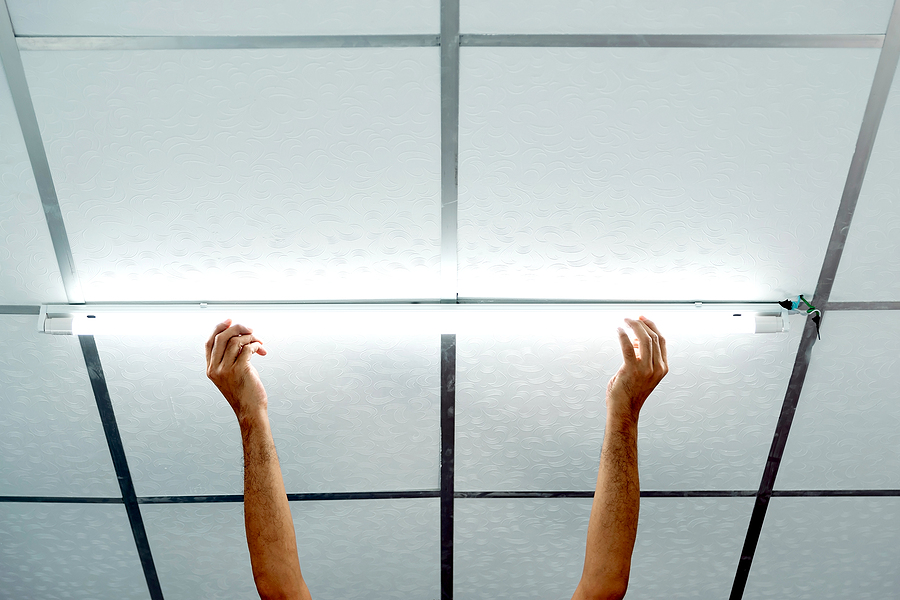Which One is the Winner in the LED VS Fluorescent Tube Comparison? – Here’s the Answer

It seems “forever” since fluorescent tubes have been used in commercial areas like hallways, offices, and warehouses, where they provide low-cost lighting. No matter how long it’s been around, does that mean it’s always been the best option?
In the first, in a series of posts comparing LEDs to fluorescent tubes, we look at the differences between the two lighting products. Comparisons should be made in three areas:
Expenditure of Resources
Energy consumption or electricity use can decide by many property managers and companies. This is true not only for lighting but also for many other operational technologies in a building. Many facilities managers are interested in installing energy-efficient HVAC systems, but few are aware of the potential savings with LED tubes compared to their current fluorescent lamps. This is especially true even in areas where the lights are always on, such as parking garages, hallways, lobbies, amenity rooms, and many others.
What is the difference between an LED tube and a fluorescent one? Here’s a quick side-by-by-side comparison of the two:
The difference is only 236.52 kWh, but this only applies to one light bulb! If the price of electricity is $0.11 per kWh… The building could save $26.00 with just one bulb.
Many of us know that we don’t have a single fluorescent bulb in our homes or workplaces. Assuming there are 100 (a conservative estimate for more significant commercial properties) fixtures with two tubes each, the following equation becomes possible:
Infra-Red Operations
- Energy Use: 75,336 kWh per year
- $8,286.96 in annual operating costs
Using an LED Light Source
- 28.032 kilowatt-hours per year
- 308.352 dollars a year in operating expenses
Savings
- Savings for the year totaled 47,304kWh.
- $ 5,203.44 in annual cost savings
That’s a significant sum to save on energy costs and boost a building’s performance. Changing the fixture’s type of tube is all it takes. To maximize annual savings, consider replacing more lines throughout the property. LED tubes to have the potential to save both energy and operating costs, depending on the type of fluorescent tubes (T4, T8, T12).
We know the next question will be, “But if 16-Watt LED T8 tubes replace 34-Watt T12 fluorescents, will that not decrease the lighting levels?”
Theatrical Display of Lights
The short and simple answer to the above question is NO; the light levels will not only improve but will also maintain their brightness for the entire lifespan of the LED tube. For fluorescent tubes, this is not the case.
How many times have you entered an underground parking garage or walked down a hallway and noticed the ominous flickering of the light bulbs? The light output of fluorescent tubes diminishes rapidly as they wear out… and the lights begin to flicker after a while. On the other hand, LED tubes don’t blink or reduce the bulb’s light output. The morning work remains constant when a line reaches the end of its useful life. For your tenants, there will be no dimming of the lights, no flickering, and most importantly, no eerie experience!
Fluorescent Tubes That Flicker wildly.
The average lumens (light output) for each type of bulb are shown below:
- It consumes 1,800 watts.
- LED 16W Tube: 1,900 watts
Be aware that the LED’s lumens remain constant over time, whereas the fluorescent’s lumens depreciate over time (as previously mentioned)! Light levels can make a massive difference in enclosed areas, such as an underground parking garage, even if the difference isn’t apparent.
Low Power Consumption
The comparisons above show that LED tubes are the best option for general lighting. Luminous efficacy is the light output ratio to the amount of power used and the number of lumens generated by a light bulb. To put it another way, it refers to the amount of light produced per unit of energy.
We get the following results if we stick with the two tubes we’ve been comparing.
There are 53 lumens in a 34-watt, 32-watt T12 fluorescent light.
119 (1900 lumens/16 watts) for a 16-watt LED tube
More than twice as efficient as standard fluorescent tubes. Is there anything else we can add?
When it comes to improving your commercial property’s environmental impact and operational costs, you can’t beat T8 tubes.
